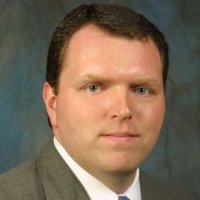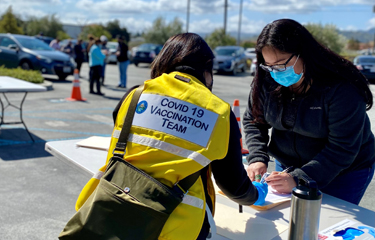Later this month, an old U.S. Environmental Protection Agency facility on the waterfront in New Bedford, Massachusetts, will be teeming with seafood industry workers taking the next step toward the industry’s – and the nation’s – recovery from the COVID-19 pandemic.
Thanks to nearly USD 4 million (EUR 3.4 million) in funds from the recently enacted American Rescue Plan, the facility will become a COVID-19 vaccination site. A release from the city indicates it will handle up to 125 inoculations an hour and potentially up to 1,000 people daily, and the focus will be on fishermen and others in the commercial seafood industry.
On Wednesday 31 March, New Bedford Mayor Jon Mitchell toured the facility with U.S. Senator Elizabeth Warren (D-Massachusetts) and others.
“New Bedford’s essential seafood processing workforce plays a vital role in feeding the United States and distributing seafood from America’s top commercial fishing port,” the mayor said in a statement. “It is critical that we continue to do everything we can to keep essential workers safe and support the equitable distribution of vaccines.”
This comes as the developers of the three COVID-19 vaccines have ramped up production and U.S. President Joe Biden has doubled his goal of administering 100 million in his first 100 days to 200 million in that timeframe. That period ends on 30 April.
In New England and the Pacific Northwest, states and industry stakeholders are working to promote vaccinations to seafood workers, a group that’s not the easiest to contact. Fishermen may stay out at sea for extended periods, and processors are typically seasonal or temporary hires, many of whom are migrants on temporary visas.
As Mitchell and Warren made their rounds near the country’s most valuable seafood port, clear across the country in Unalaska, Alaska – home to America’s biggest seafood port – supermarket chain Safeway was starting a vaccination drive for fishermen. On Wednesday, 31 March, and Thursday, 1 April, the company administered roughly 500 doses of the Johnson & Johnson vaccine in the remote port town.
In a statement, Albertsons Companies, which owns Safeway, said the Johnson & Johnson vaccine was ideal for fishermen. It’s the only one-dose protocol currently available; Vaccines produced by Pfizer and Moderna require two. And experts highly recommend rigid timelines for those two-shot protocols, a regimen that’s not always possible for someone on a fishing boat to adhere to.
In Washington state, health leaders there have been identifying which populations would be ideal for the doses of Johnson & Johnson they receive.
“Thinking just about logistics, especially for maritime vessels, knowing that they're out at sea for X number of months and might not be able to come back within that second dose window, that's the main reason why the single-dose presentation might really be a good choice for this group,” Washington State Department of Health Vaccine Management Section Manager SheAnne Allen told SeafoodSource.
But Allen, like other health experts, said that all the available vaccines work well. While essential workers, like fishermen and seafood processors, became eligible for vaccinations in Washington state on 22 March, there were several that qualified earlier because they met certain criteria, such as age or health factors, to get the first doses.
For those members of the fishing industry, Allen said the state transferred 100 doses to Alaska so the eligible fishermen could get their second shots on a timely basis.
Lusamerica Foods, a seafood wholesaler and processor, held a successful vaccination drive at its Morgan Hill, California headqarters on 16 March, with 191 employees receiving the first dose of the Moderna vaccine. A follow-up date of 13 April is set for those workers to receive their second dose, and 30 other Lusamerica employees had already been vaccinated before the clinic, according to Lusamerica Foods Communications and Sustainability Manager Peter Adame.
“We wanted to create an easy opportunity for our hard-working team to get vaccinated. Organizing the event took a lot of coordination and was a successful group effort," Lusamerica Plant Manager Tony Silva said in a press release. "It’s because of our passion for our employees that we were able to host the event."
In Oregon, Pacific Seafood plans to hold a mass vaccination event on Friday, 2 April, for its workers, KGW-TV reported. The industry giant is even offering its workers at its Newport plant paid time off if they go out on their own to get a shot. It’s also planning a similar event later in the month for workers in Warrenton, too.
A similar event took place in mid-March in Plaquemines Parish, Louisiana. More than 300 fishermen and processors received shots from National Guard, according to the Gulf States Newsroom.
Allen told SeafoodSource that Washington state health officials have similar plans for a pop-up clinic as well.
While more doses of the vaccine are on their way across the country, the U.S. Centers for Disease Control and Prevention is reporting an uptick in new cases. As of Sunday 28 March, there were more than 30 million cases reported to the federal health agency, and the seven-day rolling average of new cases exceeds 60,000, a 10 percent spike from the previous week.
Even Pacific Seafood isn’t immune. In this week’s surveillance report, the Oregon Health Authority list’s the company’s Warrenton facility as an active hotspot. There have been 10 new cases reported there since an investigation started early last month, with the most recent happening two weeks ago.
"Several people who work at our Warrenton facility have tested positive for COVID in the past few weeks, though many are already back to work. The cases affecting our workers coincide with increasing cases in the surrounding community,"Pacific Seafood General Counsel Tony Dal Ponte told SeafoodSource. "Our facility continues to follow all CDC guidance, and we’re working to source vaccines for our team members at all locations just as soon as we possibly can."
Photo courtesy of Lusamerica







